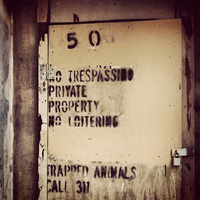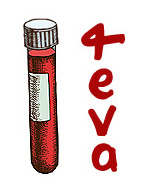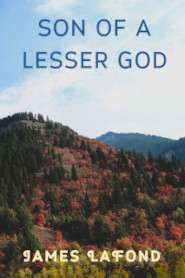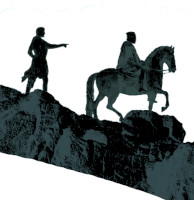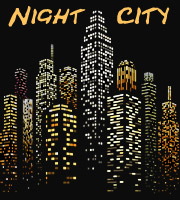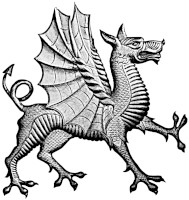Equine & Geographical Appendices
Horse Types
stallion [male],
gelding [neutered],
mare [female],
foal [new born],
colt [young male, 2 months to 2 years],
philly [young female]
Horse Breeds
A hand is four inches in equine height
Destrier: 1000 years of crossbreeding European draft horses, ancient warhorse lines and Arabians, resulting in a horse of 17 to 20 hands of the most aggressive type, trained to trample men on foot and bowl over lighter horses.
Arabian: a tall horse of 16 to 18 hands, native to The Holy Land, has larger nostrils and a great lung capacity to power its long legs for speed over a distance. These, when attainable, are preferred for crossbreeding destriers for service in higher elevations in Awes West. This is the preferred breed for light cavalry—both hussars [1] and pistoleers—in Old World service.
Palfrey: a light riding horse of numerous types. The Knightly class desire Arabian palfreys of a height that permit a clear view of their command, particularly for Factors, who act as aides on campaign.
Quarter horse: a muscular horse of 14-15 hands best in a quarter-mile dash and preferred for combat by dragoons or hobbilars who dismount for battle and by sergeants and hussars who must dash about the field and avoid heavier mounted men.
Mountain pony: ideally 14 hands, a cross between a quarter horse and a pony, preferred by rangers for nimble footing, endurance and ease of handling
Pony: typically 12-13 hands, the light Indian horse, often a paint, always shooed in the ranger service, except by scouts, and is used by boys, scullers, as light pack animals, brood stock, and as palfreys by rangers and sergeants on long marches, who wish to keep their specialized war mounts fresh.
Pack horse: typically a pony that is fed grain
Draft horse: a large breed of horse well-fed to pull wagons and carts.
Mule: or Molly is a cross breed from a Jack donkey and a mare, that is sterile in 17 of 18 cases. This animal, while neurotic, works harder on less feed than a horse of the same size and is ideal for pack-trains, used most extensively in mining. Mules are typically shorter than horses, though goliath breeds can reach 18 hands
Donkey: Jack or Jenny, used extensively in The Spanish services of Iberia and New Spain where feed is sparse, standing between 9 and 14 hands, with big ears. One goliath breed in Awes South with two-foot ears, called an Oliphant, is used to breed superior mules.
Demi-Donkey: or a borough, a beast of less than 10 hands, degenerated in New World circumstances to the donkey’s minimal qualities.
Equine Colors
The coloration of mounts for purposes of transportation on church missions, military duties and in mixed social circumstances is of great importance. A person riding the mount that most accurately reflects his or her station in life has announced his place in the feudal hierarchy of Elder Earth long moments and perhaps even miles before coming into face-to-face verbal range of intercourse. In the Old World, it is common for entire units to be mounted on the same color horse. In The New World, one’s horse is matter more of individual social rank, and only reflects the Old World military scheme where the Knightly orders are concerned, each of the three preferring a certain color of mount for as many uses as possible, and of an absolute for a destrier.
Black: color preferred by Factors and insisted upon by Priestly Class men such as His Righteous Gore of Priory Door, Underbishop of Awes South and by priests, plague doctors, wytchfinders, pilgrims, inquisitors and other traveling men of The Church.
Gunbarrel: or a “steeldust” black with grey, the preferred color of The Knights Trace.
Rhone: a red & white breed with mixed coloring on the body and with solid leg coloring, much preferred by the ladies of New Spain.
Paint: a two-colored horse preferred by Indians.
Buckskin: a horse colored like tanned deer hide, preferred by scouts to blend with their buckskin clothing.
Bay: dark brown, the preferred color of the Knights of Saint George.
Appaloosa: a black spotted horse, much favored by the Dons of New Spain.
Palomino: a golden blond horse, the preferred color of The Knights Sepulcher, whose destriers have minimal Arabian admixture and are giants adapted to the cold of Awes North.
Sorrel: red, preferred by married ladies of the Knightly Class.
Dapple: gray and spotted, typically ridden by nuns, deacons, minstrels, jesters and academics.
Dun or “Grulla”: a lighter duller buckskin typically used by the mestizo demi-scouts of New Spain.
White: called a “gray”, the preferred color of Czarist horsemen and by knights of many Old World nations and by maidens of the Knightly Class in Wester New England.
…
Geographical Notes for the Modern Reader
For the reader consigned to the irrational sorcery of Late Stage Modernity, attempting to place the key locations of Elder Earth into the dust-locker of delusion ye call reality, some notes may assist the reading of Ranger?
…
Awes West
Redrock Station = Redrock Canyon, northwest of Loveland, Colorado
Denver Station = Denver, Colorado
Lookout Mountain = Lookout Mountain, Colorado, above Denver and Golden
Winter Station = Frazier, Colorado, above Mophet Pass
…
In the Contested Area of New Spain & Awes West
Winter or Stone Deacon Meadow = Granby, Colorado
Hell’s Door, West, also:
Hinter Station &
Hither Tarnation = Glenwood Springs, Colorado [3]
…
New Spain Proper
Fief Blake = Grand Junction, Colorado
…
Awes South
From South by Northwest to North
Arkansas
Dawn Mountains = Boston Mountains
Voodoo Cattle Crag = Buffalo River Valley, a roughly 20 mile drainage running northwest
Yawn Pass = the high pass linking the Buffalo and Osage Valleys meandering northwest towards Missouri
Bowstave Valley = Osage Valley, the highest point of march, a 20 mile long high river valley linking the Boston and Ozark Mountains, northwest towards Missouri
Hell Door, South = Eureka Springs, Missouri, [4] the southern terminus of 20 mile long Butler Hollow, running north
Boogerman Hollow = Roaring River Hollow, Missouri, running parallel to the east of Butler Hollow for a third the length and offering an operational blind ally to an unfamiliar force before the Age of Enlightenment with mapping yet at Arthurian levels.
Exeter Plantation = Exeter, Missouri, 4 miles north of the north door of Butler Hollow
Priory Door = My Host, Paul’s house among twisted oaks, where I write this book, above Shoal Creek. Paul has forgiven me for making his home into the breakout point for the Voodooist Invasion of 2031.
Shoal Creek Station = Down around the bend where the westward flowing Shoal Creek meets the northward flowing Spring Creek, and the road begins to sink, turning into a river in rain. Here the dirt farm track turns north, where, in simpler times a mill powered by a water wheel was the center of human habitation, but is now occupied by a concrete spillway crossing in the gloomy sunken road where tweakers smoke their meth pipes by night and Kenny the Great Hound, worries them with canine outrage.
The Sunken Road = What would be the natural track to points north along the creek bed before the advent of railroads and automobiles. I walk here just before sundown with Chloe the demi-hound.
…
Notes
-1. Hussars are light horsemen based on a Hungarian type, who wear a bearskin hat and fight with a heavy, wickedly curved scimitar, ideal for cutting down fleeing footmen. Ranger sergeants in the Knightly Services of Wester New England are a cross between a hussar and a dragoon, or hobilar.
-2. Dragoons, or hobilars, ride horses to battle and dismount to fight on foot with saddle guns, a single shot carbine or a blunder buss. The rangers of Wester New England, are essentially hobilars trained also to use pistols and lassos from horseback.
-3. While the industrialized child mind of Modernity views sulpher springs where water might steam, boil and smell like rotted egg, as a boon to bodily health and a place of bathing, the right-thinking mind of Elder Earth, naturally sees such locations as Yellow Stone, Wyoming [being in actuality Hell’s Door, North] as potential places of satanic intercession in the lives of men.
-4. Currently the focus of decadent homosexual and normie boomer biker drug culture in The Four States Region.



